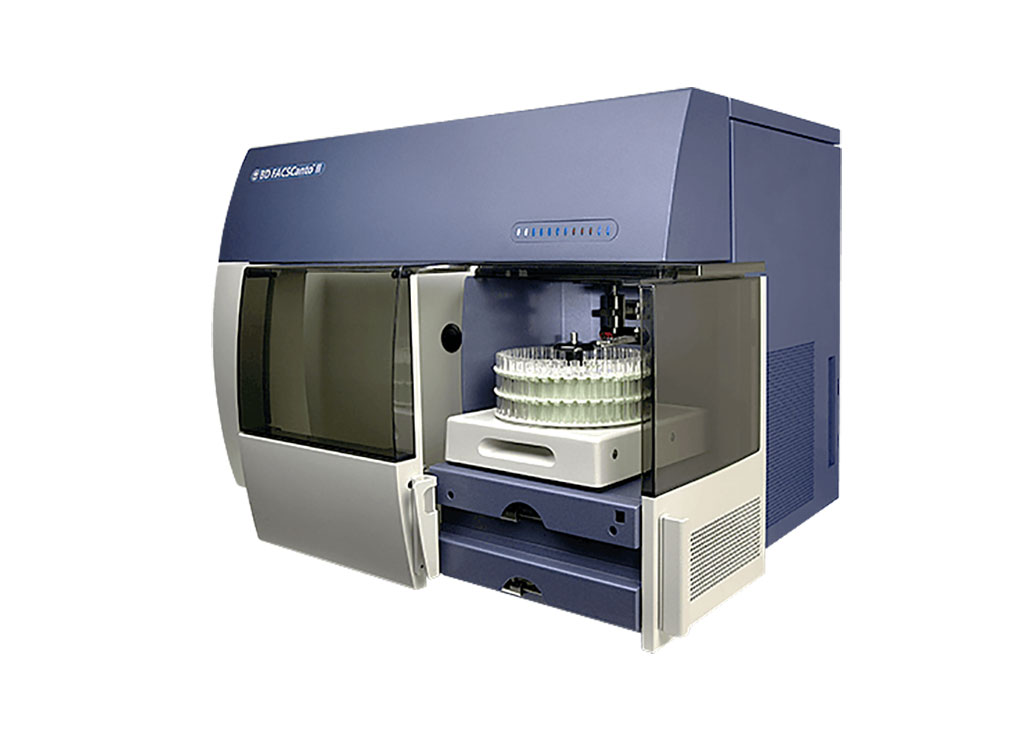Tissue Counterpart to Monoclonal B-Cell Lymphocytosis Characterized
By LabMedica International staff writers
Posted on 21 Apr 2021
Monoclonal B-cell lymphocytosis (MBL) was initially proposed to recognize patients with a monotypic B cell population identified by peripheral blood (PB) flow cytometry (FC) that did not meet numerical criteria for chronic lymphocytic leukemia (CLL).Posted on 21 Apr 2021
While MBL is defined in the blood, pathologists encounter rare cases in which a monotypic B-cell population is detected in biopsy tissue undergoing FC without obvious morphologic involvement by lymphoma (referred to as tMBL). Most, if not all, cases of CLL are preceded by MBL.

Image: BD FACSCanto II flow cytometer (Photo courtesy of BD Biosciences)
Medical Laboratory Scientists at the Cleveland Clinic (Cleveland, OH, USA) retrospectively identified non–bone marrow/peripheral blood cases with monotypic B cells detected by tissue-based flow cytometry, but without an identifiable lymphomatous infiltrate on routine histopathology during a 10 year period. They excluded cases with prior diagnosis of chronic lymphocytic leukemia (CLL)/small lymphocytic lymphoma or MBL. Flow cytometry was performed in-house on 31 cases (6-color FC, 0.04% sensitivity; BD FACSCanto, (BD Biosciences, San Jose, CA, USA) or was performed at outside reference laboratories.
The scientists identified 54 cases (35 lymph node, three splenic, and 16 soft tissue/viscera). Forty-six cases were CLL-type, two were atypical CLL, and six were non-CLL. tMBL was detectable by immunohistochemistry in 14 cases (26%, all CLL-type). Concurrent blood flow cytometry, available in 10 cases, showed four with low-count MBL (3 CLL-type, one with non-CLL–type), five with high-count MBL (all CLL-type), and one case negative for clonal population. With median follow-up of 51 months, two patients had progression of disease (CLL, 68.7 months; and diffuse large B-cell lymphoma, 5.9 months). Patients with immunohistochemistry-detectable tMBL had increased monoclonal B cells per total lymphocyte events, morphologic evidence of bone marrow involvement, higher white blood cell count, and increased absolute lymphocyte count.
The authors concluded that tMBL spans an immunophenotypic spectrum similar to MBL, is detectable by immunohistochemistry in a minority of cases (often CLL immunophenotype), and is likely systemic in most cases. Development of overt lymphoma is uncommon but may occur, warranting clinical follow-up. The study was published on March 15, 2021 in the journal Archives of Pathology and Laboratory Medicine.
Related Links:
Cleveland Clinic
BD Biosciences







 assay.jpg)






